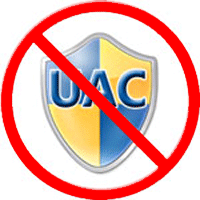- Nov 18, 2021
- 17
Hallo all..
I'm just b trying to understand about User Account Control prompts.
First of all UAC will be activated under Standard User Account? Is the same as SUA?
For beginner, it's it a good idea to use UAC prompts? It will be another layer of security?
Will there be too many prompt due to legitimate system process taking place and end up confusing me?
OK, let's say, if i am just surfing website doing high risk video streaming in sandboxed environment, . and not don't anything else, no other programs running... if there is UAC prompt, i should cancel it right? Even if by cancelling it may cause video to stop running due to possible malware?
If I'm to open other program such as photoshop, in order to avoid UAC prompt confusion, i shouldn't be browsing at the same time, so that any UAC that happens due to system changes can be allowed.
And i shouldn't be connected to Internet when I'm opening other program.
Does that make any sense?
I do understand UAC PROMPT is not 100 % foolb proof against malware, its abit like anti-exe, but its better to have it activated as another layer of protection?
I'm just b trying to understand about User Account Control prompts.
First of all UAC will be activated under Standard User Account? Is the same as SUA?
For beginner, it's it a good idea to use UAC prompts? It will be another layer of security?
Will there be too many prompt due to legitimate system process taking place and end up confusing me?
OK, let's say, if i am just surfing website doing high risk video streaming in sandboxed environment, . and not don't anything else, no other programs running... if there is UAC prompt, i should cancel it right? Even if by cancelling it may cause video to stop running due to possible malware?
If I'm to open other program such as photoshop, in order to avoid UAC prompt confusion, i shouldn't be browsing at the same time, so that any UAC that happens due to system changes can be allowed.
And i shouldn't be connected to Internet when I'm opening other program.
Does that make any sense?
I do understand UAC PROMPT is not 100 % foolb proof against malware, its abit like anti-exe, but its better to have it activated as another layer of protection?



